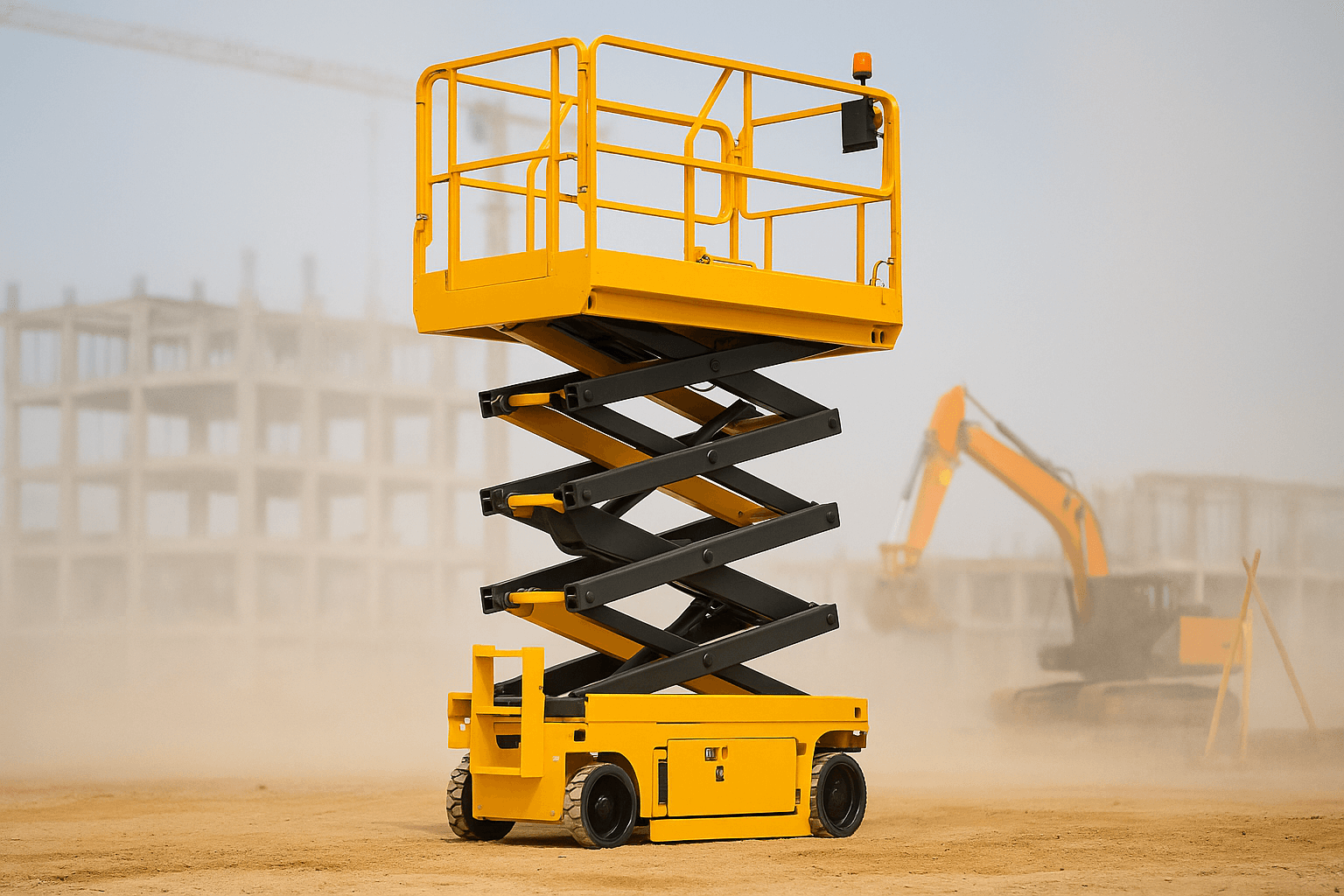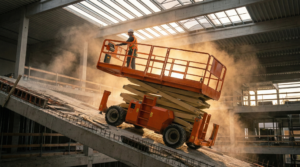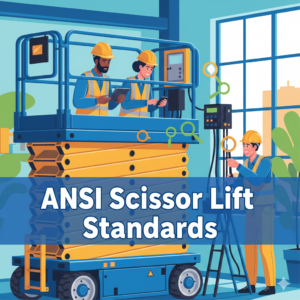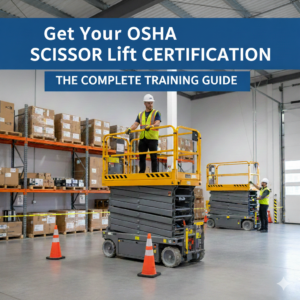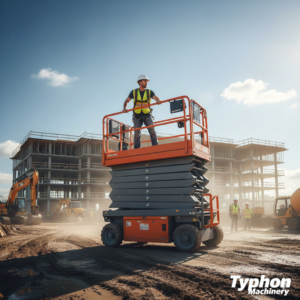Most scissor lifts can only be moved while elevated under specific conditions governed by manufacturer guidelines and strict safety protocols. Moving a scissor lift while the platform is raised presents additional risks and is restricted by many manufacturers and regulatory agencies unless certain conditions are met.
Manufacturer Instructions and Equipment Design
Scissor lifts are typically designed to be repositioned when their platform is fully lowered, as this provides maximum stability. Some modern models, however, are engineered to allow elevated movement at very slow speeds—usually under 0.5 mph (0.7 km/h)—as long as the manufacturer’s instructions are strictly followed. For example, specific models like the Genie GS-1930 permit limited movement when raised, but only under level, firm-surface, and low-speed conditions.
Safety Hazards and Regulatory Guidance
The United States Occupational Safety and Health Administration (OSHA) and similar organizations worldwide highlight fall protection, stabilization, and positioning as core hazards of scissor lift operation. Moving the lift while elevated can lead to tip-over accidents, collisions with overhead obstructions, or falls if not performed correctly. Thus, operators are advised to consult the operator’s manual and adhere to the manufacturer’s restrictions before attempting to move the lift while elevated. Most guidance and safety bulletins recommend against this practice unless the equipment is specifically designed for it.
Best Practices for Elevated Movement
Where movement is permissible, the following precautions are essential:
-
Ensure the platform load is within rated capacity and evenly distributed.
-
Operate only on stable, flat, debris-free surfaces.
-
Move at the slowest speed possible—often limited by the lift’s control systems.
-
Use a spotter to monitor and communicate about overhead hazards and obstacles.
-
Maintain vigilance for nearby workers, vehicles, and power lines.
When Elevated Movement is Not Allowed
If the manufacturer does not expressly permit moving the lift while raised, always lower the platform fully before repositioning. Attempting to move a lift that is not designed for elevated movement can result in equipment tipping or loss of safe control. Violating manufacturer guidelines may also constitute regulatory non-compliance and could result in penalties or liability for accidents.
What are the risks of moving a scissor lift while elevated
Moving a scissor lift while elevated introduces several serious safety risks that can result in injury, equipment damage, or fatalities. The most prominent hazards include tipping over, crushing, falls, collisions, and electrocution.
Tip-Over and Loss of Stability
When a scissor lift moves with the platform elevated, its center of gravity rises and shifts, making the equipment much less stable. Even small obstacles, uneven surfaces, potholes, or sudden stops can lead the lift to tip over, possibly throwing operators from height or causing the machine to collapse.
Crushing Hazards
Moving while elevated increases the risk of pinching or crushing workers between the lift and nearby structures, such as door frames, beams, and walls. There’s also additional danger from moving vehicles operating in the vicinity.
Risk of Falls
Scissor lift platforms are designed with guardrails, but unexpected movement, sudden stops, or jolts while moving can cause operators to lose their balance and fall, especially if not wearing recommended fall protection.
Collisions
Elevated movement restricts visibility, increasing the chances of running into overhead obstructions, power lines, or other obstacles. Collisions can result in equipment damage, injuries, or even electrocution if power lines are involved.
Electrocution
Moving an elevated platform closer to live power lines significantly increases the risk of electrical accidents. Electricity can arc to an elevated lift, causing severe injury or death even without direct contact.
Overloading and Mechanical Failure
Elevated movement can exacerbate existing issues like platform overloading. If moved while carrying more than the rated load, a lift may become unstable, break down, or cause mechanical failure.
How can improper use lead to scissor lift tipping over
Improper use of a scissor lift can lead to tipping over primarily by destabilizing the lift’s center of gravity and compromising its balance. Key ways this happens include:
-
Operating on Uneven or Soft Surfaces: Using the lift on slopes, inclines, potholes, or soft ground reduces stability, making tipping far more likely.
-
Overloading or Uneven Load Distribution: Exceeding the rated weight capacity or placing an off-center load shifts the center of gravity and can cause the lift to topple.
-
Moving While Elevated (if not designed for it): Moving the lift with the platform raised changes balance and magnifies swaying or jolts, increasing tip-over risk.
-
High Winds and Inclement Weather: Strong gusts can sway an elevated platform, destabilizing the lift enough to cause tipping.
-
Operator Errors and Lack of Training: Untrained operators may fail to observe weight limits, surface conditions, or safety instructions, heightening the risk of misuse.
-
Leaned-Out Workers or Sudden Movements: Workers leaning over guardrails or abrupt motions can shift the lift’s center of gravity dangerously off balance.
-
Neglecting Safety Inspections and Maintenance: Mechanical failures due to poor upkeep can cause structural instability or lift collapse.
The raised platform elevates the lift’s center of gravity, making it more susceptible to tipping from any imbalance. For these reasons, OSHA and manufacturers require full training, adherence to surface and load guidelines, and lowering the platform before moving unless the lift is explicitly designed to move elevated.
Proper use, including stable setup, correct loading, weather awareness, and adherence to safety protocols, is essential to prevent tip-over accidents when operating scissor lifts
What training is needed to prevent scissor lift tip-overs
To prevent scissor lift tip-overs, proper training is essential and should cover the following key areas:
Comprehensive Equipment Operation Training
Operators must receive hands-on training and instruction on the safe use of scissor lifts, including understanding the machine’s functions, controls, and limitations. Training covers how to inspect the lift before use, proper setup, and positioning on stable, level ground to maximize stability.
Understanding Load Capacities and Distribution
Training emphasizes never exceeding the lift’s weight capacity, including personnel, tools, and materials. Operators learn to distribute loads evenly on the platform to avoid shifting the center of gravity, which can lead to tipping.
Awareness of Environmental Factors
Operators are trained to assess site conditions such as surface stability, slopes, ground obstructions, and weather (especially wind speeds). Training reinforces that lifts must not be used on uneven, soft, or sloped surfaces beyond manufacturer tolerance and not in high wind conditions which compromise stability.
Safe Movement Protocols
Training stresses that unless specifically allowed by the manufacturer and for certain lift models, moving the scissor lift while elevated should be avoided. Operators learn to always lower the platform before relocation to maintain safe center of gravity and reduce tip-over risk.
Fall Protection and Hazard Awareness
Training includes proper use of fall protection equipment such as harnesses and guardrails, identification of overhead hazards (power lines, structures), and maintaining clear work areas. Operators develop situational awareness to avoid collisions and entanglement while elevated.
Pre-Operation Inspections and Maintenance
Operators learn to conduct thorough pre-use inspections to identify mechanical issues such as leaks, damaged components, or faulty safety devices that could contribute to instability. Regular maintenance is emphasized to ensure equipment operates safely.
Regulatory Compliance and Certification
Training programs follow OSHA and ANSI standards, often requiring formal certification. Certified operators are educated on safety rules, emergency procedures, and reporting protocols, ensuring competence and accountability on job sites.
Summary
Effective scissor lift tip-over prevention training combines knowledge of equipment, site hazards, operational best practices, load management, and safety regulations. Well-trained operators are less likely to make critical errors that destabilize lifts, thereby protecting workers and preventing costly accidents
What are the key components of scissor lift safety training
Key components of scissor lift safety training include:
Equipment Operation and Controls
Training on how to properly operate the scissor lift, including understanding all controls, functions, and safety mechanisms of the specific model. Operators learn how to safely raise, lower, and maneuver the platform.
Pre-Use Inspection Procedures
Instruction on conducting thorough daily inspections before use to check for mechanical issues such as leaks, damaged parts, malfunctioning controls, and safety devices. This helps ensure the equipment is safe to operate.
Load Capacity and Distribution
Education on the manufacturer’s load limits covering personnel, tools, and materials, and the importance of even load distribution to prevent tipping hazards.
Site Assessment and Surface Conditions
Training to assess the worksite environment for hazards such as uneven ground, slopes, soft surfaces, overhead obstacles, and power lines. Operators learn to evaluate whether conditions are safe for lift use.
Safe Movement and Stability
Guidance on when and how to move the lift safely, including the importance of lowering the platform before repositioning unless the machine is specifically designed for elevated movement.
Fall Protection and Emergency Procedures
Coverage of proper use of fall protection equipment, hazard awareness, and steps to take in emergencies, including rescue and evacuation procedures.
Regulatory Compliance and Documentation
Training on relevant OSHA, ANSI, and other regulatory requirements, record-keeping, and ensuring operators hold valid certification or licenses where required.
Risk Awareness and Hazard Prevention
Education on common cause accidents, how to recognize risky situations, and methods to prevent falls, tip-overs, collisions, and electrical hazards.
These components collectively help ensure operators are equipped with the skills, knowledge, and attitude necessary to use scissor lifts safely and effectively on job sites.
What practical skills are essential for safe scissor lift operation
Essential practical skills for safe scissor lift operation include:
Proficient Equipment Handling
Operators must skillfully control the lift’s movement, including raising and lowering the platform smoothly and navigating tight spaces without sudden or jerky motions, ensuring stability during all phases of operation.
Pre-Operation Inspection Competence
Operators should be able to thoroughly inspect the lift before use, identifying signs of mechanical problems, hydraulic leaks, damaged guardrails, or faulty controls that can compromise safety.
Load Management Skills
Correctly estimating and managing the total weight on the platform is critical. Operators need to balance loads evenly and never exceed the lift’s rated capacity to avoid instability or tip-over.
Site Hazard Recognition
Operators must effectively assess the ground and environment, recognizing uneven terrain, slopes, obstacles, overhead hazards like power lines, and adverse weather conditions, adjusting or postponing work if necessary.
Safe Movement Execution
Knowing when and how to safely reposition the lift, including lowering the platform before movement except when allowed otherwise by the manufacturer, helps prevent accidents caused by elevated movement.
Fall Protection and Emergency Response
Operators should be adept at using personal fall protection equipment, securing harnesses properly, and knowing emergency protocols for rescue or platform evacuation.
Clear Communication and Situational Awareness
Good communication with co-workers and spotters, along with constant awareness of nearby personnel and equipment, helps avoid collisions and unsafe conditions.
Compliance with Regulations
Understanding and applying OSHA and ANSI safety standards ensures that all operating practices meet legal and safety requirements.
Mastering these practical skills significantly reduces the risk of accidents and promotes a safe working environment when operating scissor lifts.
Conclusion
Whether a scissor lift can move while elevated depends entirely on its design, manufacturer guidelines, and local safety regulations. Operators should always consult the owner’s manual, adhere to workplace safety policies, and err on the side of caution—generally assuming that elevated movement is prohibited except where specifically approved by the manufacturer

